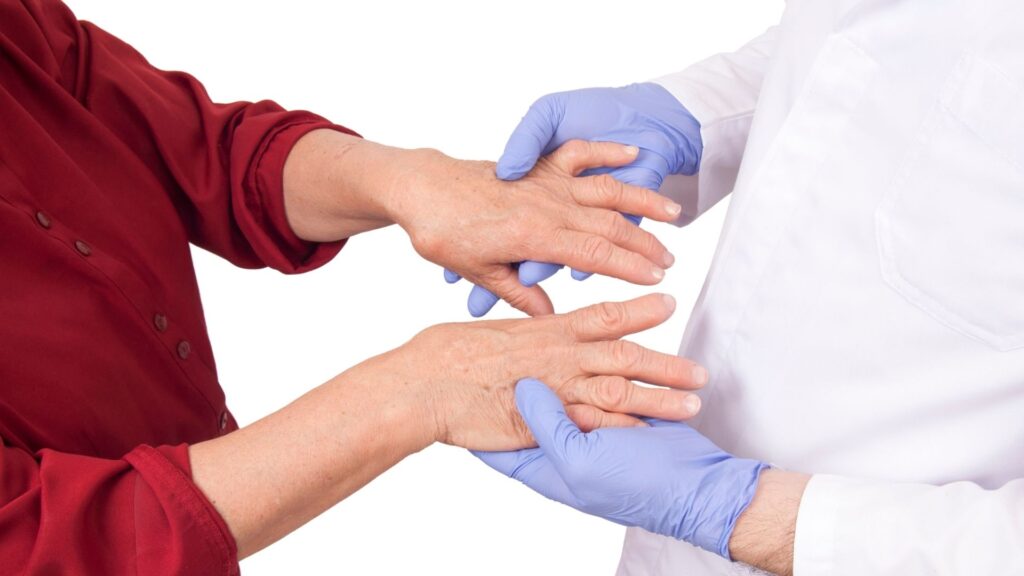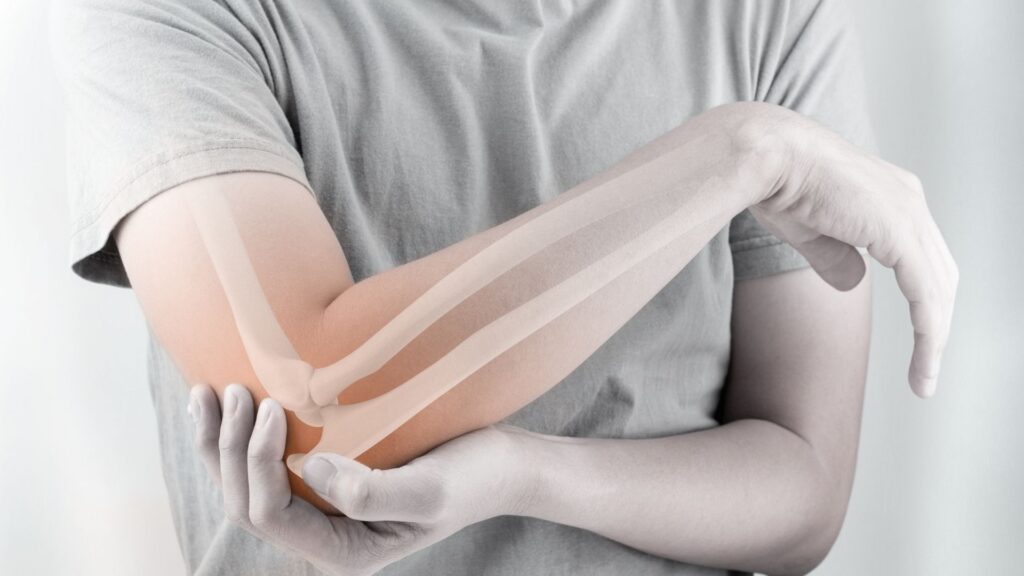
Life Without Arthritis Is Worth Living
Pain and discomfort are common experiences for all humans. Some aches and pains, however, refuse to go away. When our joints hurt, we can’t decide if it’s because we don’t get enough exercise or because we overdo it. Perhaps an underlying, fatal health condition is to blame for the suffering, and we can’t help but worry whether that’s the case. It’s possible that arthritis was the diagnosis given by the doctor when you went in complaining of joint pain. When that happens, most people freak out because humans typically worry about things they can’t control or predict.
If you or a loved one has recently been diagnosed with arthritis and you’re curious to learn more about the condition, you may want to keep reading this article, which was authored by an ensemble of clinicians from Sirwiss’s extensive professional network.
What Is Arthritis?

Arthritis is a condition that affects the joints and is characterized by joint pain and discomfort. The wrist, knuckles, hips, knees, and ankles are all examples of joints. Arthritis is not a single disease, but rather an umbrella term for more than 100 conditions affecting the body’s joints. Arthritis is characterized by joint inflammation that causes discomfort and agony and can range in severity from mild to severe and affects individuals of all ages. Some chronic forms of arthritis can cause joint structure damage over time. Globally, nearly 4 million, including minors, are affected.
Different forms of arthritis have different symptoms, different causes, and different treatment choices. Arthritis can be classified by doctors based on a number of other symptoms and contributors,
The most prevalent forms of arthritis are:
- Degenerative arthritis: Wear and tear on the joints causes degenerative arthritis, a condition characterized by the gradual breakdown and eventual destruction of joint tissue.
- Inflammatory arthritis: Autoimmune arthritis describes a group of rheumatoid arthritis subtypes. Arthritis and inflammation develop when the body’s immune system misidentifies the joints or tissues surrounding them as invaders and attacks them.
- Infectious arthritis: Inflammation of the joint is caused by bacteria, viruses, or fungi that have made their way in there. Even if the infection is cured by treatment, the resultant arthritis can sometimes persist for the rest of the patient’s life.
- Metabolic arthritis: Uric acid can be produced as the body breaks down waste materials. Deposits of uric acid can form and cause discomfort and gout if they accumulate in a joint. Pseudogout is caused by calcium pyrophosphate dihydrate crystals forming in the joints of some people, especially the elderly.
Another form of the disease is systemic arthritis, in which the disease extends throughout the body and affects multiple organs and tissues. Inflammation and swelling of a joint are caused by damage to the tissues that surround, cushion, and shield the joint, which can occur in any form of arthritis. This condition may result in pain, rigidity, and a restricted range of motion in the affected joint. Below are some of the most prevalent forms of rheumatism.
Rheumatoid Arthritis
Rheumatoid arthritis (RA) is an autoimmune and inflammatory disease in which the immune system of the body attacks the joints. No one knows for sure what caused this. When you have RA, the surface of a joint can get inflamed, which can damage the joint even more. RA can affect the hands, knees, and arms, but it can also affect other parts of the body, like the eyes, lungs, and heart. One thing that all people with RA have in common is that their symptoms are bilateral, which means they show up on both sides of the body. For example, you might feel pain in both hands and knees.
Osteoarthritis
Osteoarthritis, on the other hand, is a wear-and-tear type of arthritis, which means it can be caused by damage over time.
Some things that can cause osteoarthritis are:
- Old Age
- Sex (Females)
- Obesity
- Occupational Risks
- Joint Injury or Stress
- Individual Joint Structure
- Genetic Factors
It is among the most prevalent forms of arthritis. As cartilage degrades, joint tissues begin to press against one another, causing friction. When cartilage deteriorates significantly, joints lack the necessary cushioning for appropriate movement and extension, and tissues can become inflamed. As a result of osteoarthritis, the joint may lose its normal shape or develop bone spurs, causing additional harm and pain. This is a degenerative disease, which means that the condition can worsen over time.
Juvenile Arthritis
Juvenile arthritis, also known as childhood arthritis, is a type of arthritis that affects youth. The most common form of arthritis in children is juvenile idiopathic arthritis. Arthritis in childhood can cause permanent joint damage and make mobility and daily activities challenging for the child. Researchers are unaware of the etiology of juvenile arthritis at this time. However, it may be owing to immune system diseases. Although there is currently no cure for juvenile arthritis, some individuals can experience a permanent remission. This indicates that the disease is likely no longer active or progressing. However, any extant or previous damage to the joint will persist.
Gout
Gout is an inflammatory form of arthritis brought on by hyperuricemia, the overproduction or underexcretion of uric acid in the body. With gout, excessive amounts of uric acid can accumulate in the joints, causing inflammation and injury. Periodic flare-ups of gout can last up to several weeks and cause the affected joint or joints to become distended, red, and excruciatingly painful. Repeated attacks of gout may result in gouty arthritis, a deterioration of the condition. It most frequently affects a single joint in the lower extremities, such as the knees, ankles, or toes. However, uncontrolled gout can simultaneously affect multiple joints.
Gout may be more prevalent in those who:
- Are Male
- Experience Obesity
- Have certain health conditions, such as diabetes, poor kidney function, or certain cardiovascular diseases
- Use Medications, such as Diuretics
- Drink Alcohol
- Have a diet high in fructose or purines, including foods such as red meat and seafood
Lupus Arthritis
Some individuals mistakenly believe that lupus is a form of arthritis. Lupus is an autoimmune disease that can affect organs other than joints; arthritis is one of the many possible symptoms of this condition. Due to its resemblance to numerous other diseases and the difficulty in differentiating it during diagnosis, lupus has been dubbed “the great imitator” by some. Inflammation can result in lupus arthritis due to the hyperactivity of the immune system caused by lupus.
Reactive Arthritis
This form of arthritis is the result of an infection in the body, manifesting itself several days to weeks after infection. Symptoms that may accompany joint pain or edema due to reactive arthritis include an inflamed or painful eye, skin rashes, ulcers of the mouth or genital areas, gastrointestinal symptoms such as diarrhea, and urogenital symptoms including pelvic pain or painful urination.
Psoriatic Arthritis
Psoriatic arthritis is a type of inflammatory arthritis that can occur in conjunction with psoriasis, although some individuals can develop psoriatic arthritis without having psoriasis. Extremely excruciating and debilitating, psoriatic arthritis can affect the spine and extremities, as well as the tendons and ligaments.
Ankylosing Spondylitis
The spine may be affected by this form of arthritis. Ankylosing spondylitis can manifest with symptoms such as lower back and neck pain, which typically occur at night and may ease with activity but not rest. This form of arthritis may also affect other joint areas, including the hip, buttocks, upper and lower extremities, and joints, tendons, and ligaments. Over time, the inflammation caused by arthritis can cause the spine’s tissues to stiffen and restrict mobility. In more serious cases, this may cause the vertebrae to fuse together.
Symptoms of Arthritis
The precise symptoms of each type of arthritis vary by type and can be distinct for each individual.
Examples of Typical Arthritis Symptoms Include:
- Joint pain
- Joint stiffness
- Swelling in the joints
- A flushed color or appearance around the joints, or heat around the joint area
- Difficulty moving
- Fever
- Unintentional weight loss
- Breathing problems
- Skin rash or itchiness
How Do You Determine the Type of Arthritis You Have?
It is essential to identify the variety of arthritis you have, as treatment options and efficacy will vary depending on the type.
To determine the type of arthritis you have, your doctor may use the following information:
- Your current symptoms
- You and your biological family’s medical history
- A physical examination
- Imaging tests, such as x-rays
- Blood test results
Your physician could make the diagnosis of arthritis, or they could refer you to a specialist for further evaluation.
Arthritis sufferers may experience a decline in quality of life as a result of the disease’s associated pain and inability to perform daily tasks. Insomnia, exhaustion, sadness, and anxiety are all possible outcomes. There is a correlation between arthritis and a host of other chronic diseases, including respiratory illness, diabetes, and heart disease. Frailty, loss of function, independence, and social isolation can result from not engaging in physical activity due to the discomfort of arthritis. Therefore, it is crucial to diagnose and treat the condition as soon as possible.